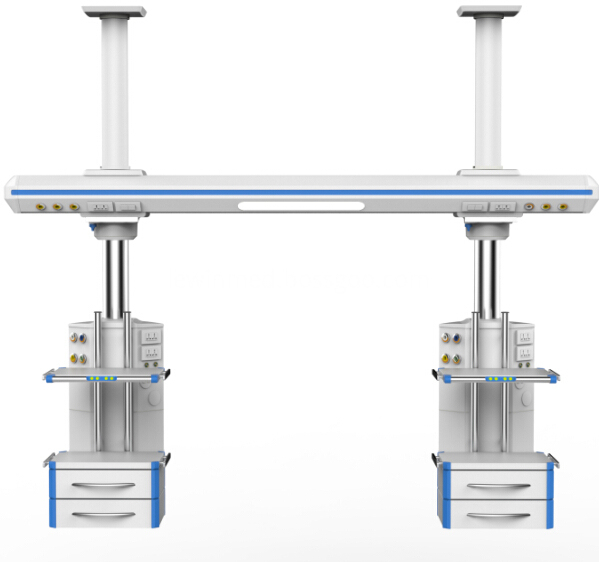Infectious causes
Causes of infectious diseases that cause cow infertility include brucellosis, trichomoniasis, and vaginitis. However, in the production of more common or brucellosis, the incubation period of this disease is 2 weeks to 6 months, pregnant cows have a miscarriage, no placental retention, reproductive organs and fetal membrane inflammation, the occurrence of abortion cows in pregnancy 5 months ~ After 7 months, the cows had abortions associated with submandibular or metritis after abortion. If the cows were not treated in time, they might be secondary to chronic metritis and eventually cause infertility. In cattle, mainly rely on "allergies" to diagnose the disease, for the detection of positive diseased cattle to be isolated and reared, continue to use, and gradually eliminated, so as to minimize the occurrence of infertile cattle. Vaccinations are carried out on a regular basis every year. The commonly used vaccines are Brucella breve No. 19 attenuated bacterin, Brucella breve sheep No. 5 attenuated bacterin, and pig bred No. 2 live lyophilized seedlings.
Non-infectious causes
Endometritis, oophoritis, salpingitis, ovarian cysts, etc. Endometritis is a common disease of cows and one of the important causes of infertility. The disease is caused by a combination of bacteria, fungi, and mycoplasma. Symptoms are repeated infertility, mucus turbidity when estrus, and sometimes with purulent secretions. The diagnosis is based on the rectal examination of the uterus. Endometritis is treated with different irrigants depending on the degree of inflammation. Frequently used rinses include 0.1% to 0.2% of lefonomol, 0.05% of chlorhexidine, 0.05% of benzalkonium bromide, and penicillin streptomycin mixture (1.6 million units of penicillin, 1 g of streptomycin dissolved in 100 ml of saline). When the endometrial hemorrhage can be washed with 1% alum or 1% to 3% citric acid cold solution, can be used for stubborn chronic endometritis 1% fish fat solution or 0.5% to 1% iodine solution rinse. Irrespective of what solution is used for flushing, the capacity cannot be too large, typically 500 ml to 1000 ml. After rinsing, the uterus should be massaged so that the liquid accumulated in the uterine cavity is discharged as much as possible. It can be flushed once every day for 2 days to 3 days, and every other day thereafter. Using this method to treat the recovery of the uterus will have a very good effect.
Follicle cyst: This disease is caused by many factors such as endocrine disorder, poor feeding and management, and temperature change.
Cows suffering from follicular cysts are generally estrus-prone and frequent. When they reach a serious stage, about one-fourth of the diseased cows show “Muxiong madnessâ€, which means that the libido is particularly exuberant and extremely restless, often crawling across other cows. Rectal examination revealed ovarian enlargement, with one or more cyst follicles on one or both ovaries. The disease can be intramuscular injection of luteinizing hormone 150 units to 300 units, generally 3 days to 6 days after the injection of cysts that form the corpus luteum, the symptoms disappeared, 20 days to 30 days return to normal estrus cycle. If one week after administration, the rectal examination did not change much, or the appearance symptoms did not improve, the second medication may be used. Obvious symptoms, it is generally impossible to cure once, in the course of treatment, cysts may recur, must continue to medication, while strengthening the feeding and management until the cysts shrink and disappear.
The cross arm and control cabinet of the Tower Crane adopt the imported high-strength aluminum alloy ofpatent technology for the one off extrusion molding, Icu Bridge and the surface undergoes the primary oxidationtreatment.
Pneumatic brake plus mechanical friction damping brake
The imported electrical machine is adopted, and the electric perpendicular moving up and down.The gas pipeline, power supply and computer communication line are separately arranged withoutinterference.The imported (GENTEC) brand German standard gas terminal (over 20,000 of inserting and pulling out) is adopted.The ICU Bridge with high bearing capacity with suspension the cavity mirror car system.The horizontal rotation function can accurately position without excursion.

ICU Bridge
Icu Bridge,Icu Bridge Pendant,Portable Supply Unit,Tower Crane
Shandong Lewin Medical Equipment Co., Ltd. , https://www.lewinmed.com